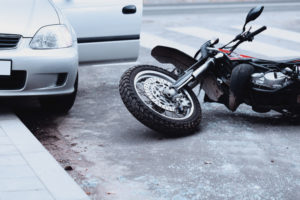Bicycles meet the definition of a vehicle in many states, which means that those riding bicycles are bound to the same rules of the road that drivers of automobiles and motorcycles must follow.
Crashes involving bicyclists and automobiles occur for a variety of reasons. When these accidents happen, the cause is often negligence, either on the part of the driver of the automobile, the bicyclist, or both.
How is Fault Determined?
Liability in bicycle accidents is often determined by which vehicle had the right-of-way. When two vehicles approach an intersection and there is no traffic signal, the vehicle that arrives first generally has the right-of-way. If they both get there at the same time, the one to the right has the right-of-way. If the intersection includes a major street and a minor street, traffic on the major street has the right-of-way.
When a traffic signal is present, the signal determines the right-of-way, although sometimes the sensor is unable to detect the presence of a bicycle. If this happens, the cyclist can move closer to the sensor, wait until it is safe to cross against the light, or cross at the crosswalk.
Intersections
If a bicycle fails to yield to a car in an intersection and causes an accident, he will typically be considered at fault. In some states, if the cyclist does not come to a complete stop at an intersection and an accident results, he may be barred from any recovery in a personal injury case, even if the driver of the car is largely responsible for the accident.
Bicyclists should always ride with traffic. In a state where a bicycle is considered a vehicle, riding against traffic is not only against the law, but it is also dangerous, to blame for many bicycle accidents, and the cause of many serious and even fatal injuries.

The Legal Examiner and our Affiliate Network strive to be the place you look to for news, context, and more, wherever your life intersects with the law.













Comments for this article are closed.